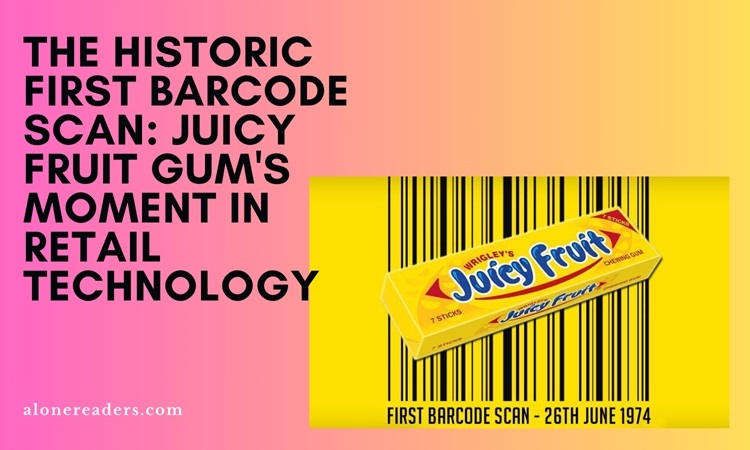
The scanning of a pack of Juicy Fruit Gum on June 26, 1974, at a Marsh Supermarket in Troy, Ohio, marked a pivotal moment in retail history. This seemingly ordinary transaction, carried out by cashier Sharon Buchanan and involving Marsh Supermarkets, Inc.'s research and development director Clyde Dawson, represented the first practical use of a technology that would revolutionize the retail industry: the barcode.
Barcodes, now a ubiquitous part of shopping experiences worldwide, had a humble and rather speculative beginning. Their story starts back in 1949 on the sands of Miami Beach, where N. Joseph Woodland, a mechanical engineer, sketched the first concept of what would become the modern barcode. Prompted by Bernard "Bob" Silver, a graduate student at Woodland's alma mater, the Drexel Institute of Technology, the duo was responding to a call from a supermarket manager seeking a more efficient way to check out customers.
Woodland and Silver's initial design, a bullseye pattern, was patented in 1952. However, the early stages of barcode technology faced significant hurdles. The absence of a practical method for reading the information contained within these barcodes was a major limitation. This technological gap was primarily due to the non-existence of the laser, which was not invented until 1958. Additionally, the first scanners were bulky and impractical for everyday use. Consequently, Woodland and Silver sold their patent for a modest sum of $15,000, unable to foresee the full potential of their invention.
The real breakthrough in barcode technology came with the contributions of George Laurer, a colleague of Woodland at IBM. Laurer was instrumental in refining the barcode into a scannable, rectangular format, making it printer-friendly and suitable for widespread use. This crucial development occurred in 1973, just a year before the historic scan at Marsh Supermarket.
The decision to use Juicy Fruit Gum as the first product to test this revolutionary technology was strategic. Concerns about the scanner's ability to detect the item's small barcode were prevalent. The successful scan not only dispelled these doubts but also marked the beginning of a new era in retail operations.
Today, barcodes are an integral part of the global retail landscape. More than 5 billion barcodes are scanned daily, facilitating efficient inventory management, expediting the checkout process, and enhancing customer experience. The continued use of barcodes on products, including the iconic Juicy Fruit Gum, is a testament to the enduring legacy of this technology.
This innovation, now taken for granted, has its roots in the visionary ideas of Woodland and Silver and the practical advancements made by Laurer. Their combined efforts transformed a simple concept into a critical tool for modern commerce.
The Smithsonian Museum of American History, recognizing the historical significance of this technology, now houses one of Marsh's first scanners. This artifact serves as a tangible reminder of the moment when the retail world shifted towards greater efficiency and accuracy, thanks to the barcode.
In conclusion, the story of the barcode, from its conceptualization on a beach to its first real-world application with Juicy Fruit Gum, is a remarkable journey of innovation. It highlights the impact of visionary thinking and technological advancement on everyday life. As we continue to scan items in our daily shopping routines, it's worth remembering the profound change initiated by that first beep over four decades ago, heralding a new era in the retail industry.